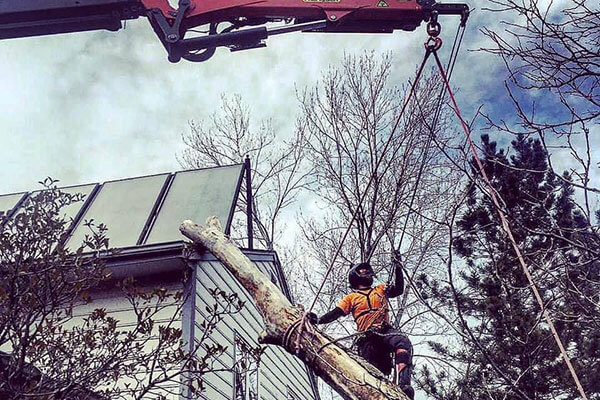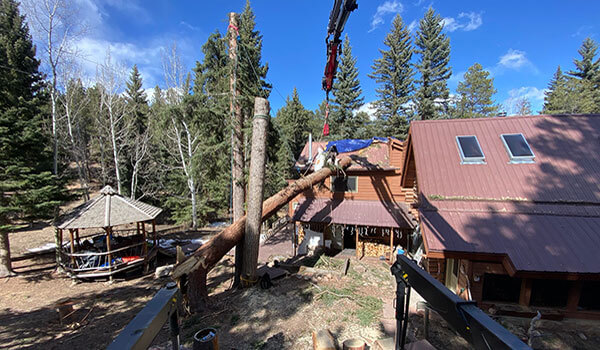The weather in Colorado can be very unpredictable, leaving your trees/forest and landscape at risk of being damaged.
Whether it is large hail, strong winds or a heavy snowfall, trees are always susceptible to broken limbs, stress cracks and fractures. In many cases the tree can be saved by selectively thinning and pruning branches and limbs to strengthen the tree, however if a tree is damaged past the point of repair the Splintered Forest crew is able to safely remove the tree for you.
Things to Look for Before a Storm
A tree with poor structure or pest damage can be prone to breaking in high winds or with extra limb weight from snow or rain. Trees that grow quickly and have no structural pruning to help guide them can form weak branch unions that are more prone to ripping out or breaking. Keeping your trees pruned on a schedule also helps to remove deadwood and branches that are prone to breakage from being blown out of the tree in high winds.
Safety After a Storm
Most damage during a storm comes from trees and limbs falling unexpectedly. If you suspect your tree has been damaged please contact the Splintered Forest crew immediately to assess the situation.
It is also important to remember that rules and regulations for trees along streets vary by city. In some cases it may be your responsibility to care for these trees that are near your property. If you are concerned about a publicly owned tree, start by contacting your City Forester for information about the process of caring for the tree.
Do Your Research
The Colorado State Forest Service (CSFS) warns homeowners to avoid being pressured by door-to-door tree care workers to remove or trim your trees after a storm. The tree industry has three main groups that work to accredit both businesses and individuals:
- International Society of Arboriculture (ISA)
- Tree Care Industry Association (TCIA)
- American Society of Consulting Arborists (ASCA)
Home (or business owners) can consult these organizations to determine if tree care workers have obtained any of these certifications. To learn more about the industry experience and certifications held by Splintered Forest and our crew members, visit our Safety & Certifications page.








